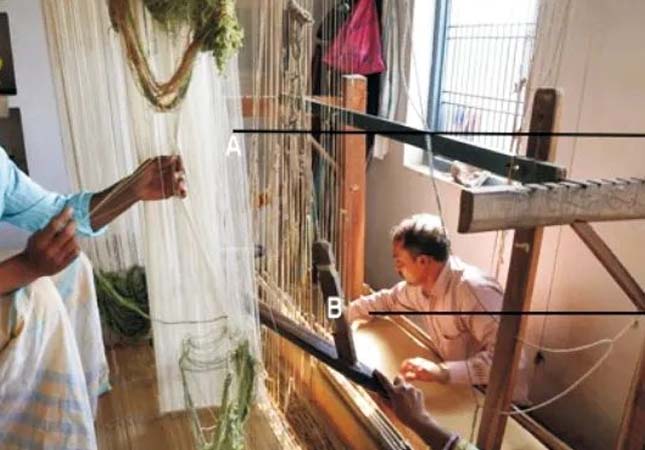Bangladesh, originally was East Pakistan, was subsumed into the territory of the Mughal Dynasty (1526-1764) in India in the 16th-18th centuries. The Aryans established the Mughal Empire and brought Islamic civilization, which directly influenced the development and history of textile technologies such as handmade fabrics and jacquard loom machine at 16th century.
The Bangladeshi nation takes Islamic civilization as its system of governance, all of the diet, residence, customs, and clothing are subject to strict constraints. The "Koran" records specific regulations on the material, shape, patterns, and color of clothing. The most representative handmade fabrics were basically created after the Mughal Dynasty, with the shape, craftsmanship and patterns were significantly influenced by national beliefs.
Traceability of Hand Looms in Bangladesh
The history of hand looms in Bangladesh has been last for more than 5000 years, the clothes called ”sarees” that handmade by Bangladeshi people are considered as one of the oldest types of clothing on the planet. The origin of this kind of cloth is mentioned in Sanskrit texts as early as the 6th century BC, and it is also recorded that handmade fabrics are used as women's clothing in the Hindu writings "Mahabharata" and "Ramayana". During the Middle Ages, clothing weaving technology ,especially the handmade fabrics dyed by original plants with unique national characteristics were extremely popular among the royal family and aristocrats.
Bangladeshi Hand Looms
Bangladeshi hand looms are well known for the uniqueness and flexibility, which can be divided into the 5 types: backstrap loom, warp-weighted loom, draw loom, pit loom and Jacquard hand loom. Among them, the backstrap loom, warp-weighted loom and Jacquard hand loom are the most common 3 types in daily using.
1. Backstrap Loom
Backstrap looms originated from ancient India and consisted of two horizontally installed wooden sticks, harness devices, and backstraps, which has the similar working principles with the ancient China spinning machine: one crossbar is fixed to the wall with the strap on the back and used as a warp beam, while the other crossbar is fixed to the woven board, connecting to the weaver's waist rope , used as a roller. The weavers need to lean back and use their body weight to tighten the backstap and the loom for straighten the warp yarns. Bangladeshi female weavers need to manually lift the heald while moving the shuttle for opening the two layers of warp.
The back-strap loom has a wide range of applications because of its capacity to weave textiles in different difficult patterns, which is one of the most commonly used hand looms by Bangladeshi craftsmen.
2. Warp-weighted Loom
The warp-weighted loom is also named as “hammer loom”, is vertical loom by appearing in the Starcevo cultural site in Hungary and the late Neolithic site in Switzerland. It was also used in ancient Greece, and then spread to north and west Europe.
It is mainly featured in the neatly wound warp yarn bundles on the main rod and the heald rod, and the tied ends of the yarn bundles on stones, potteries or tightened on the beams. Generally, the hanging object will be wound with excess warp yarns. When the loom weave a complete warp yarn, it can roll part yarns around the main rod to release the excess warp yarn from the counterweight, thus make the loom keep running to prevent the warp from breaking when finished.
3. Jacquard Hand-loom
The jacquard hand loom is for weaving complex patterned fabrics. The operator will arrange the threads according to the fabric pattern manually and will rotate the manpower cradle to make the jacquard loom machine run.
One hand jacquard loom machine commonly needs 2-3 operators(1 weaver, 2 jacquard workers) to cooperate with each other for weaving the fabric.

The traditional hand loom not only conforms to the trend of history, but also derives many types of looms with fine craftsmanship that are integrated with contemporary Bangladeshi culture, which is also the national cultural symbol of Bangladesh.




